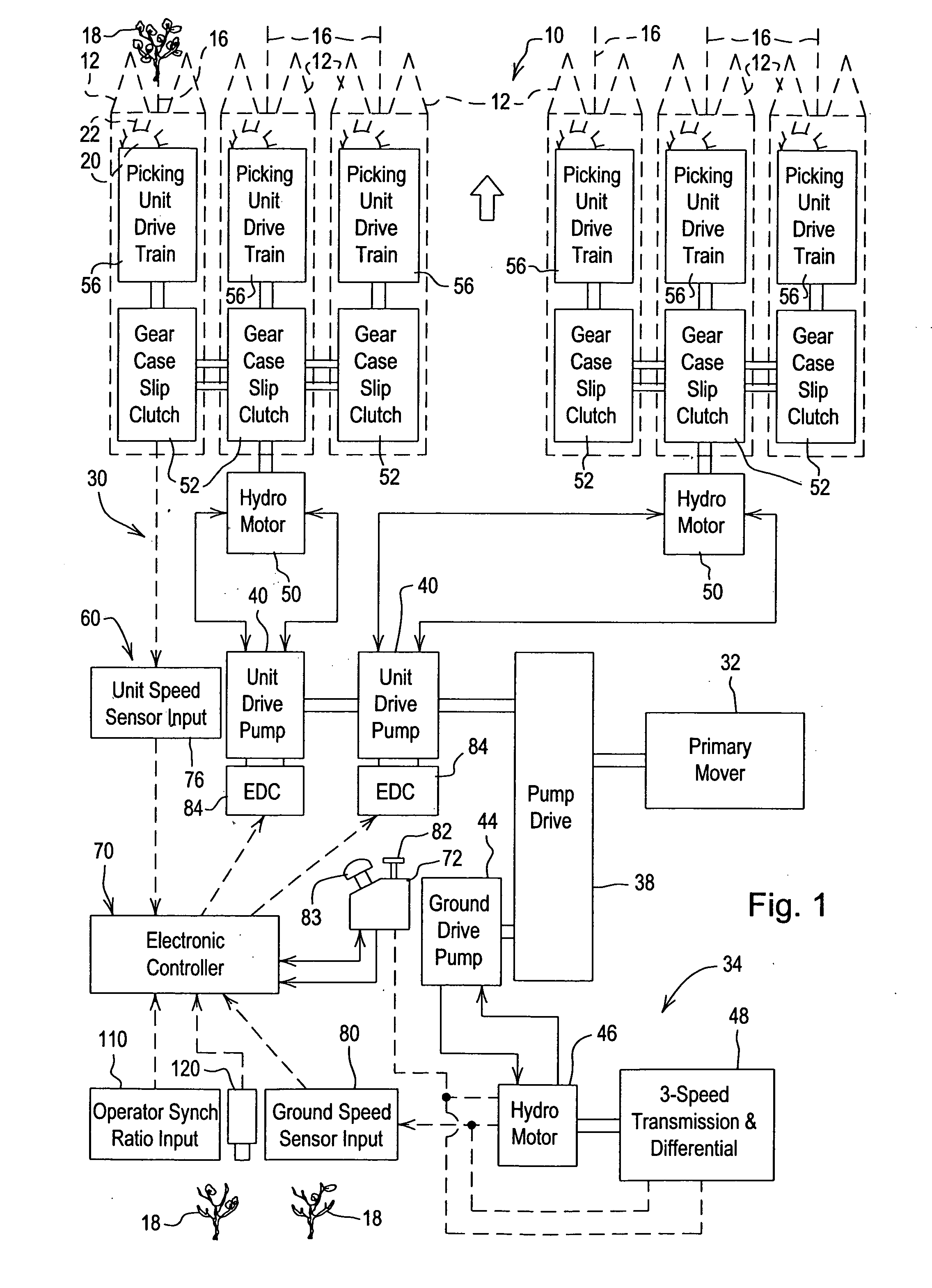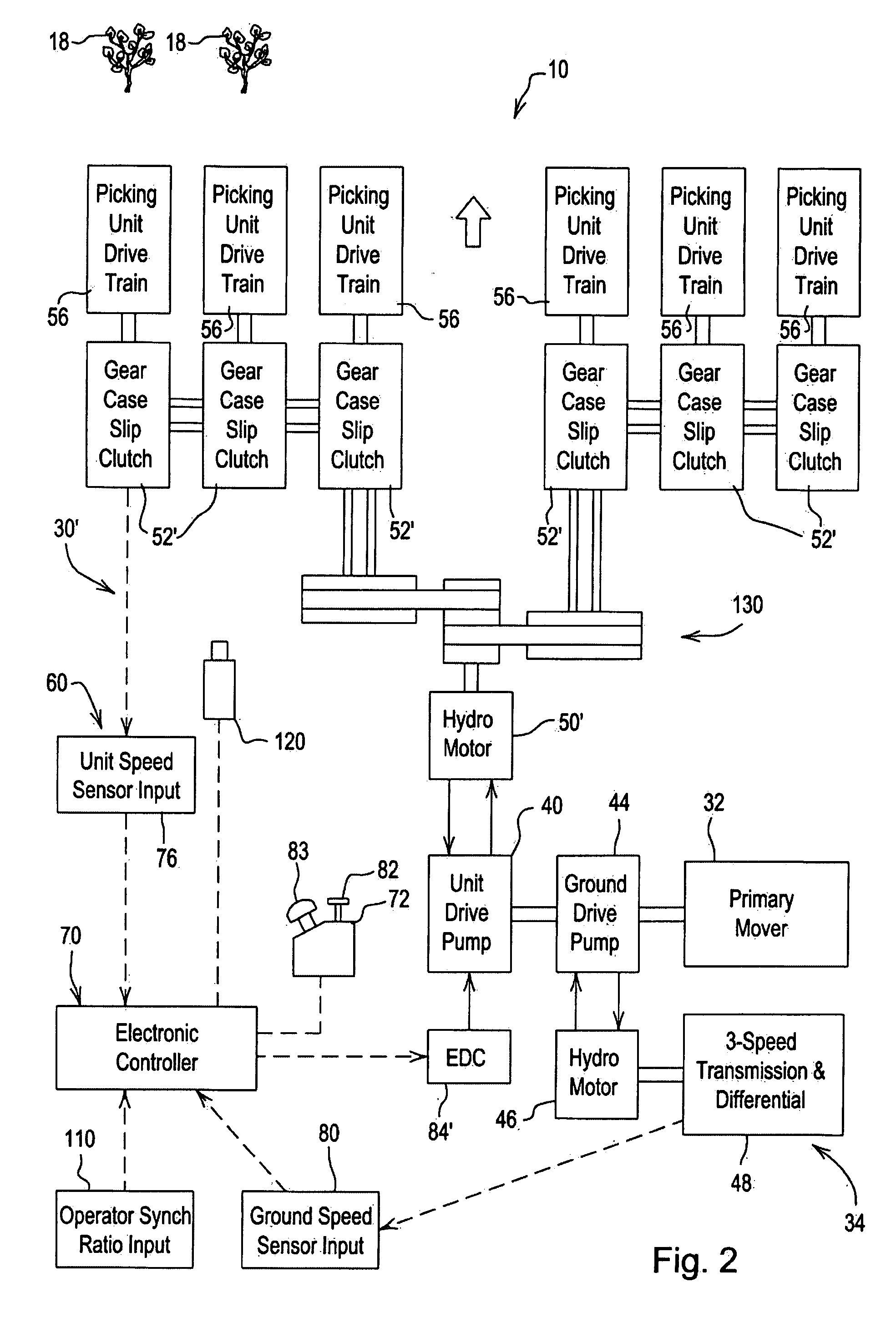Cotton harvester row unit speed synchronization control
a technology of row unit speed and control, applied in the field of cotton harvesters, can solve the problems of loss of synchronization, ground speed and unit speed synchronization over time, adversely affecting field efficiency and harvested cotton quality, etc., and achieve the effect of improving the drive structure of the cotton harvester
- Summary
- Abstract
- Description
- Claims
- Application Information
AI Technical Summary
Benefits of technology
Problems solved by technology
Method used
Image
Examples
Embodiment Construction
[0018]Referring to FIG. 1 therein is shown schematically portions of a cotton picker 10 including a plurality of conventional cotton harvester row units 12 transversely spaced at the forward end of the picker and including row receiving areas 16 for receiving cotton plants 18. The row units 12 include rotating cotton harvesting structure such as upright picker drums 20 with spindles 22 for entering and rotating in the row receiving areas and removing cotton from the plants 18. The drums 20 are rotated about upright drum axes and the spindles 22 are rotated about spindle axes by picking unit drive structure indicated generally at 30. Typically the rotation of the drums 20 is synchronized to the forward speed of the harvester 10 so that for a period of time, while the spindles 22 engage the cotton plant, the velocity of the spindle relative to the plant is approximately zero.
[0019]The harvester 10 includes a primary mover or engine 32 powering the drive structure 30 and as well as a g...
PUM
 Login to View More
Login to View More Abstract
Description
Claims
Application Information
 Login to View More
Login to View More - R&D
- Intellectual Property
- Life Sciences
- Materials
- Tech Scout
- Unparalleled Data Quality
- Higher Quality Content
- 60% Fewer Hallucinations
Browse by: Latest US Patents, China's latest patents, Technical Efficacy Thesaurus, Application Domain, Technology Topic, Popular Technical Reports.
© 2025 PatSnap. All rights reserved.Legal|Privacy policy|Modern Slavery Act Transparency Statement|Sitemap|About US| Contact US: help@patsnap.com



